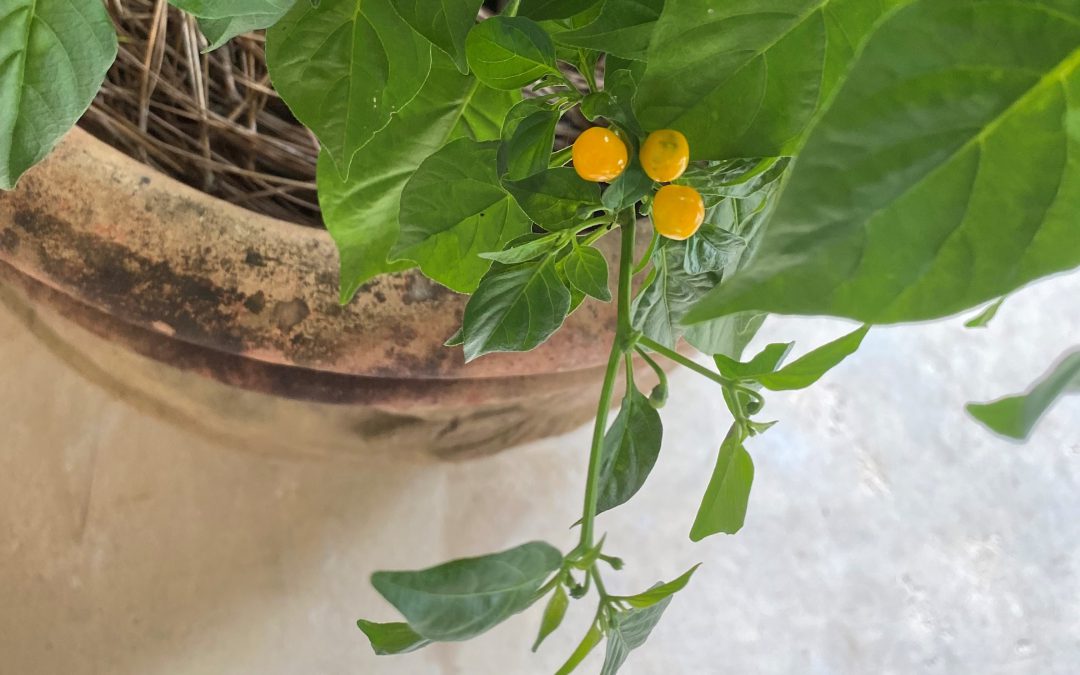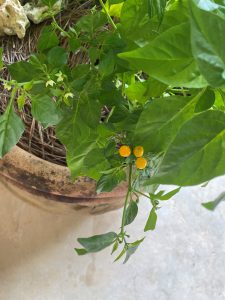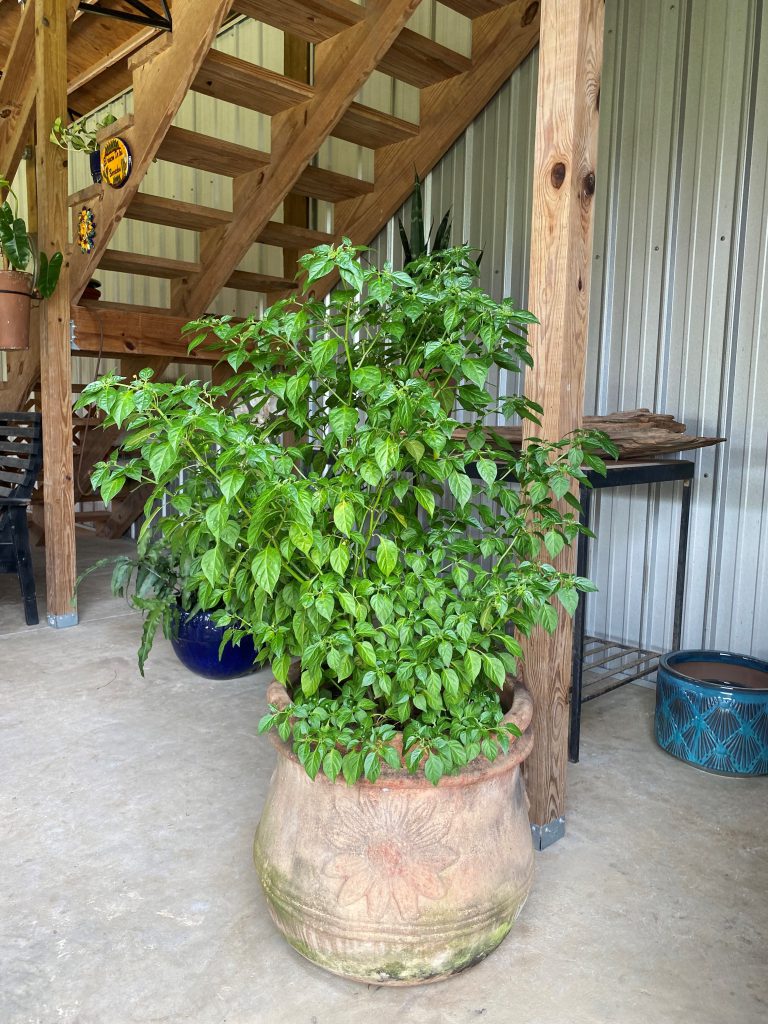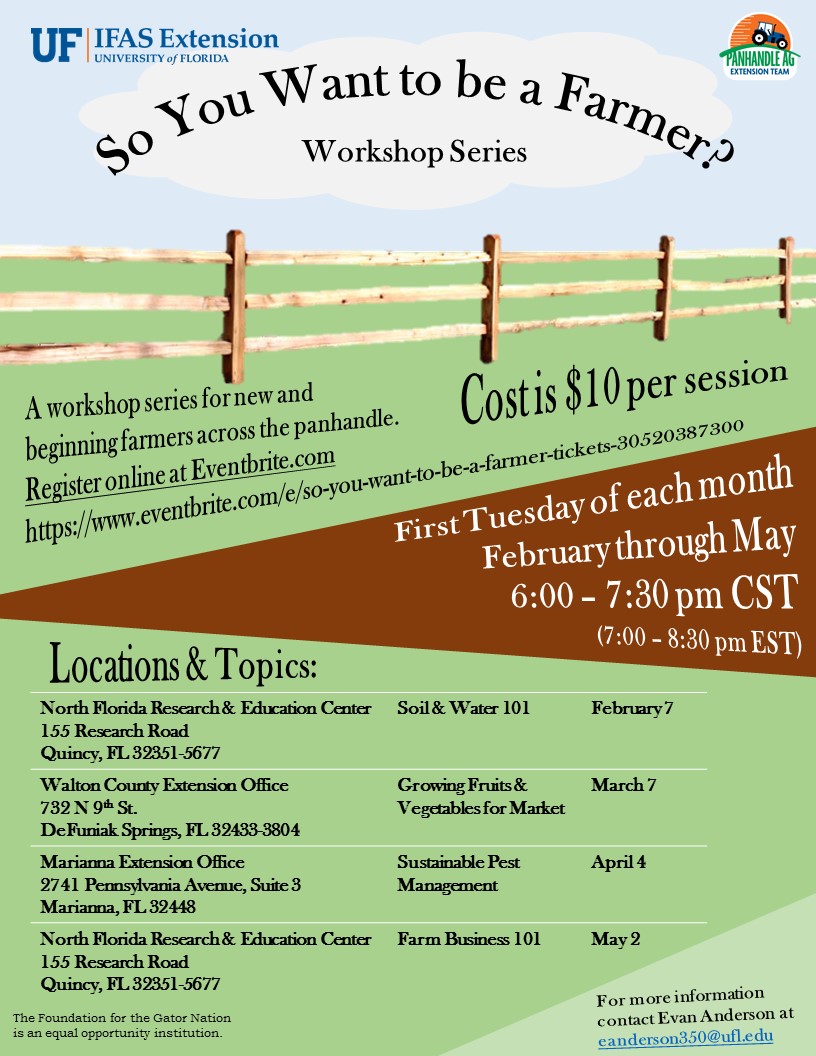
Charapita Pepper, A Unique Flavor in the Garden

Fruit of the charapita pepper. Image Credit: Stephanie Gainer, UF / IFAS Extension Master Gardener Volunteer
As spring has officially sprung, my mind has been turning to what delectable delights we may be able to grow this year in our Extension Demonstration Vegetable Garden. A few years ago, I was introduced to the very flavorful pepper, aji charapita (to be referred to as charapita) by one of my master gardener volunteers, Stephanie Gainer. When we met Stephanie and I discovered we both shared a love for spicy cuisine, so she introduced me to the charapita. I thought I had heard of all the peppers in cultivation, but when I heard this unusual flavorful pepper, I was astonished!
The charapita pepper is a small pea sized pepper that begins purplish brown and is a bright orange/yellow when ripe. It is a native of the Peruvian Amazon and holds the designation of being the most expensive pepper when sold by dry weight. Reasoning for this is two-fold, since it is very difficult to germinate, and the fruit is very small in size. They also require warm nights to fruit, so production is not suited for every climate. Also, we have found that they do best in the central Florida Panhandle when given afternoon shade after 6-8 hours of full sun in the morning. Aside from these requirements, cultivation is very similar to other hot peppers. As a compact plant, it is ideal for container culture.

Large but compact charapita pepper plant in a container. Image Credit: Stephanie Gainer, UF / IFAS Master Gardener Volunteer
When germinating seed, it is recommended to grow them indoors, 8-12 weeks before the last frost date in your area, in a very sunny location with a heating pad at the base of the starting pots. Once temperatures are consistently above 50°F during the night it is ok to set them out in the garden.
As with other hot peppers, they should be fertilized with a standard vegetable fertilizer blend at planting and periodically thereafter based on the needs of the plant in ones individual garden.
Charapita has a unique citrus and tropical fruit aroma and taste, providing the usual heat associated with cayenne peppers (about 50,000 Scoville heat units). It is often used fresh in small amounts when flavoring rice and seafood dishes but is also used as a dried ingredient for chili and grilled meat preparations. Some have said it is best added at the end of cooking. Most likely, it would be an excellent addition added fresh to finely chopped salads, to spice up traditional chimichurri or in Pico de Gallo.
In the central Florida Panhandle, we have been unsuccessful at overwintering plants so far, but others by the coast or in central or south Florida might have more success.
For more information about growing peppers in your home garden, please follow this link for a Gardening Solutions publication on the topic.
An Extension colleague of mine, Gary Bachman of Mississippi State University, has penned this excellent article about specialty peppers with a great pickling recipe for charapita. Happy growing!

